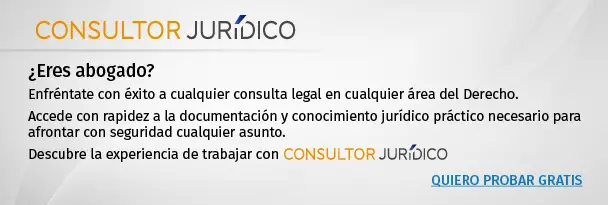

summary
EUROPEAN COMMISSION,
Having regard to the Treaty on the Functioning of the European Union,
Considering the Regulation (EEC) n. 315/93 of the Council of February 8, 1993, which strengthened the community procedures in relation to contaminants present in foodstuffs (1), included in particular in article 2, paragraph 3,
Considering the following:
- (1) Regulation (EC) no. Commission 1881/2006 (2) fixes the maximum content of certain contaminants in foodstuffs.
- (2) Perfluorooctanesulfonic acid (PFOS), perfluorooctanoic acid (PFOA), perfluorononanoic acid (PFNA) and perfluorohexanesulfonic acid (PFHxS) their perfluoroalkyl substances (PFAS) which are used or have been used in numerous commercial and industrial applications. Its widespread use, along with its persistence in the environment, has led to extensive environmental contamination. Contamination of food with these substances is primarily due to bioaccumulation in terrestrial and acute food chains, and the main source of exposure to PFAS is through the diet. However, the use of PFAS-containing materials in contact with food is likely to contribute to human exposure to these substances.
- (3) On 9 July 2020, the European Food Safety Authority (the Authority) adopted a sober opinion on the risk to human health derived from the presence of perfluoroalkyl substances in food (3) . The Authority concludes that PFOS, PFOA, PFNA and PFHxS may cause developmental effects and cause adverse effects on serum cholesterol, liver, immune system and birth weight. Consider that the negative effects will be caused by the immune system and a tolerable weekly intake (TSI) for groups of 4.4 ng/kg bw per week for the sum of PFOS, PFOA, PFNA and PFHxS, an amount that also protects against the effects of these substances. It concluded that the exposure of parts of the European population to these substances is higher than the TI, so there is cause for concern.
- (4) Therefore, maximum levels in foodstuffs for those substances should be fixed in order to ensure a high level of protection of human health.
- (5) It should provide a reasonable period for food business operators to adapt to the maximum levels established in this Regulation.
- (6) Taking into account that some foodstuffs to which this Regulation applies have even a long shelf life, foodstuffs which have been legally placed on the market before the date of application of this Regulation should be allowed to remain on the market.
- (7) Process, port both, modification of Regulation (EC) no. 1881/2006 later.
- (8) The measures provided for in this Regulation are in accordance with the opinion of the Standing Committee on Plants, Animals, Food and Feed,
HAS ADOPTED THESE REGULATIONS:
Article 1
The annex to Regulation (EC) no. 1881/2006 is modified in accordance with the annex to this Regulation.
LE0000238099_20220701
Article 2
Food products listed in the annex legally marketed before January 1, 2023 may continue to be marketed until their best-before date or expiration date.
Article 3
This Regulation will enter into force twenty days after its publication in the Official Journal of the European Union.
It will be applicable from the year 1 of 2023.
This Regulation shall be binding in all its elements and directly applicable in each Member State.
Done in Brussels, this 7th day of December 2022.
For the Commission
the president
Ursula VON DER LEYEN
ANNEXED
In addition to Regulation (EC) no. 1881/2006 incorporates the following section:
Section 10: Perfluoroalkyl Substances
Foodstuffs (1) Maximum content (μg/kg fresh weight)PFOS (4) PFOA (4) PFNA (4) PFHxS (4) Sum of PFOS, PFOA, PFNA and PFHxS (4), (5) 10.1 Eggs1, 00,300,700,301,710.2 Fishery products (26) and bivalve molluscs (26) 10.2.1 Fish meat (24), (25) 10.2.1.1
Fish meat, except for the species listed in points 10.2.1.2 and 10.2.1.3.
Meat of the fish listed in points 10.2.1.2 and 10.2.1.3, in the event that they are intended for the preparation of foods for infants and young children.
2,00,200,500,202,010.2.1.2
Meat of the following fish, in case we are intended for the preparation of food for infants and young children:
Baltic herring (Clupea harengus membras)
Bonito (Sarda and Orcynopsis species)
River burbot (Lota burbot)
Swordfish (Sprattus sprattus)
Flounder (Platichthys flesus and Glyptocephalus cynoglossus)
Mugil (Mugil cephalus)
Horse mackerel (Trachurus trachurus)
Pike (Esox species)
Plaice (Pleuronectes and Lepidopsetta species)
Sardine (Sardine species)
Sea bass (Dicentrarchus species)
Marine catfish (Silurus and Pangasius species)
Sea lamprey (Petromyzon marinus)
Tench (Tinca tinca)
White Corgono (Coregonus albula and Coregonus vandesius)
Phosichthys argenteus
Wild salmon and wild trout (wild Salmo and Oncorhynchus species)
Northern pup (Anarhichas species)
7,01,02,50,208,010.2.1.3
Meat of the following fish, in case we are intended for the preparation of food for infants and young children:
Anchovy (Engraulis species)
Common barbel (Barbus barbudo)
Bream (Abramis species)
Char (Salvelinus species)
Eel (Eel species)
Pike perch (Sander species)
Perch (Perca fluviatilis)
Russet (Rutilus rutilus)
Eperln (Osmerus species)
Coregono (Coregonus species)
358.08.01.54510.2.2
Crustaceans (26), (47) and bivalve molluscs (26).
The maximum level for crustaceans applies to the meat of the appendages and abdomen44. In the case of crabs and similar crustaceans (Brachyura and Anomura), the meat of the appendages.
3.00.701.01.55.010.3 Meat and edible offal (6) 10.3.1 CARVOIROS, PIGS and Poultry 0,300,800,200,201,310.3.3.2 sheep meat 1,00,00,200,200,201,610.3.3.3.3.3.3.3.3.3.3.3.3.3.3.3.3.3.3.3.3.3.3.3.3.3.3.3.3.3.3.3.3.3.3.3.3.3.3.3. .5,03,51,50,609,010.3.5 .game animals, except bear meat5025453,050Game offal, except bear offalXNUMX
